inspired by the revival gave rise to abolition of slavery groups and the Society for the Promotion of Temperance, as well as to efforts to reform prisons and
care for the handicapped and mentally ill.
Western New York, from Lake Ontario to the Adirondack Mountains, had
been the scene of so many religious revivals in the past that it was known as
the “Burned-Over District.” Here, the dominant figure was Charles Grandison
Finney, a lawyer who had experienced a religious epiphany and set out to
preach the Gospel. His revivals were characterized by careful planning,
showmanship, and advertising. Finney preached in the Burned-Over District
throughout the 1820s and the early 1830s, before moving to Ohio in 1835
to take a chair in theology at Oberlin College, of which he subsequently
became president.
Two other important religious denominations in America — the Mormons
and the Seventh Day Adventists — also got their start in the Burned-
Over District.
87
CHAPTER 4: THE FORMATION OF A NATIONAL GOVERNMENT
In the Appalachian region, the revival took on characteristics similar
to the Great Awakening of the previous century. But here, the center of the
revival was the camp meeting, a religious service of several days’ length, for a group that was obliged to take shelter on the spot because of the distance
from home. Pioneers in thinly populated areas looked to the camp meeting
as a refuge from the lonely life on the frontier. The sheer exhilaration of
participating in a religious revival with hundreds and perhaps thousands
of people inspired the dancing, shouting, and singing associated with these
events. Probably the largest camp meeting was at Cane Ridge, Kentucky, in
August 1801; between 10,000 and 25,000 people attended.
The great revival quickly spread throughout Kentucky, Tennessee, and
southern Ohio, with the Methodists and the Baptists its prime beneficiaries.
Each denomination had assets that allowed it to thrive on the frontier. The
Methodists had a very efficient organization that depended on ministers —
known as circuit riders — who sought out people in remote frontier locations.
The circuit riders came from among the common people and possessed a
rapport with the frontier families they hoped to convert. The Baptists had
no formal church organization. Their farmer-preachers were people who
received “the call” from God, studied the Bible, and founded a church, which
then ordained them. Other candidates for the ministry emerged from these
churches, and established a presence farther into the wilderness. Using such
methods, the Baptists became dominant throughout the border states and
most of the South.
The Second Great Awakening exercised a profound impact on American
history. The numerical strength of the Baptists and Methodists rose relative
to that of the denominations dominant in the colonial period — Anglicans,
Presbyterians, and Congregationalists. The growing differences
within American Protestantism reflected the growth and diversity of an
expanding nation.
88
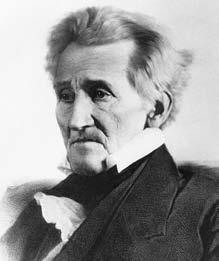
Andrew Jackson, president from 1829 to 1837. Charismatic, forceful,
and passionate, Jackson forged an effective political coalition within
the Democratic Party with Westerners, farmers, and working people.
TRANASFO
N A T IR
O MIN
N
G
A P I C T U R E P R O F I L E
The United States transformed itself again in the 19th and
early 20th centuries. A rural, agricultural nation became an
industrial power whose backbone was steel and coal, railroads,
and steam power. A young country once bound by the Mississippi
River expanded across the North American continent, and on to
overseas territories. A nation divided by the issue of slavery and
tested by the trauma of civil war became a world power whose
global influence was first felt in World War I.
89
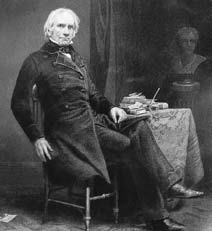
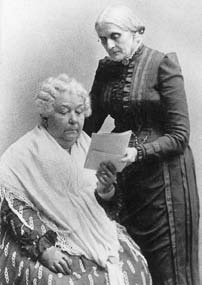
Henry Clay of Kentucky,
although never president,
was one of the most
influential American
politicians of the first half
of the 19th century. Clay
became indispensable for
his role in preserving the
Union with the Missouri
Compromise of 1820 and
the Compromise of 1850.
Both pieces of legislation
resolved, for a time,
disputes over slavery in
the territories.
The great champions of
women’s rights in the 19th
century: Elizabeth Cady
Stanton (seated) and Susan
B. Anthony. Stanton helped
organize the first women’s
rights convention in 1848
in Seneca Falls, New York.
In later years, she joined
Anthony in founding the
National Woman Suffrage
Association. “I forged the
thunderbolts,” Stanton said
of their partnership, “and she
fired them.”
90


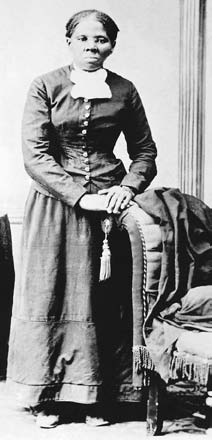
William Lloyd Garrison, whose
passionate denunciations of slavery
and eloquent defense of the rights
of enslaved African Americans
appeared in his weekly paper, the
Liberator, from its first issue in 1831 to
1865, when the last issue appeared at
the close of the Civil War.
Frederick Douglass, the nation’s leading
African-American abolitionist of the
19th century, escaped from slavery in
Harriet Tubman, a former slave who rescued
1838. His speech about his sufferings
hundreds from slavery through the Underground
as a slave at the Massachusetts Anti-
Railroad. The Underground Railroad was a vast
Slavery Society’s annual convention
network of people who helped fugitive slaves
in Nantucket launched his career as
escape to the North and to Canada in the first
an outspoken lecturer, writer, and
half of the 19th century.
publisher on the abolition of slavery
and racial equality.
91
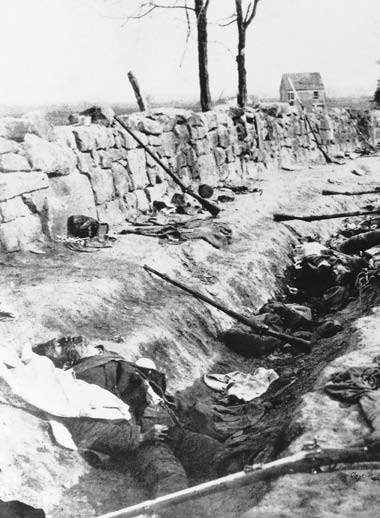
Confederate dead along a stone wall during the Chancellorsville campaign, May 1863.
Victorious at Chancellorsville, Southern forces advanced north into Pennsylvania, but were defeated at the three-day battle of Gettysburg, the turning point of the Civil War and the largest battle ever fought in North America. More Americans died in the Civil War (1861-65) than in any other conflict in U.S. history.
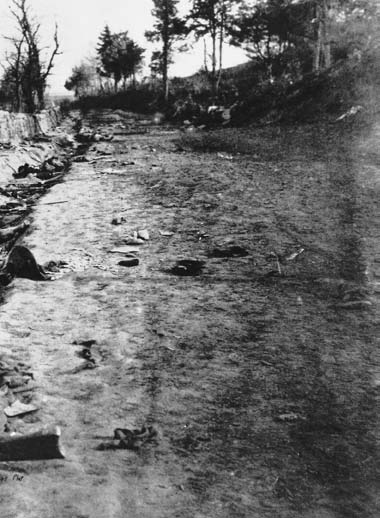
93

Encampment of Union troops from New York in Alexandria, Virginia,
just across the Potomac River from the capital of Washington.
94
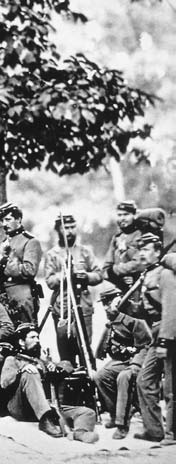
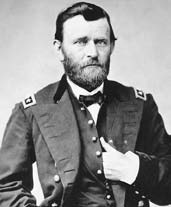
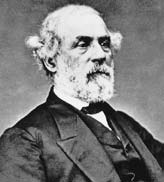
Union General Ulysses S. Grant, who led Union
forces to victory in the Civil War and became
the 18th president of the United States. Despite
heavy losses in several battles against his
opponent, General Lee (below), Grant refused
to retreat, leading President Lincoln to say to
critics calling for his removal, “I can’t spare this
general. He fights.”
Confederate General Robert E. Lee. Military
historians to this day study his tactics
and Grant’s in battles such as Vicksburg,
Chancellorsville, and the Wilderness.
95
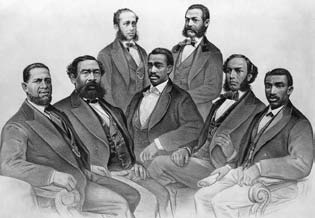
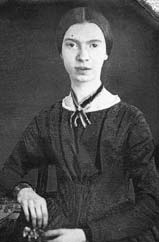
Engraving of the first African-American members elected to the U.S. Congress during the Reconstruction Era, following the Civil War. Seated at left is H.R. Revels, senator from Mississippi. The others were members of the House of Representatives, from the states of Alabama, Florida, South Carolina, and Georgia.
Although practically
unknown during her
lifetime, Emily Dickinson
(1830-1886) is now seen as
one of the most brilliant
and original poets America
has ever produced.
96
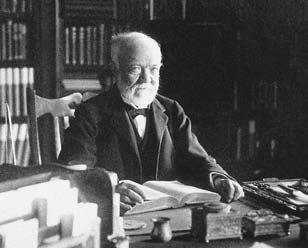
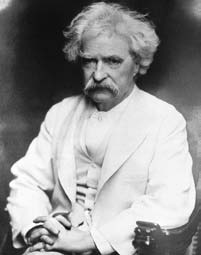
Andrew Carnegie, business tycoon and philanthropist. Born in Scotland of a poor family, Carnegie immigrated to the United States and made his fortune by building the country’s largest iron and steel manufacturing corporation. Believing that the wealthy had an obligation to give back to society, he endowed public libraries across the United States.
Samuel Langhorne Clemens
(1835-1910), better known by
his pen name of Mark Twain,
is perhaps the most widely
read and enjoyed American
writer and humorist. In his
Adventures of Huckleberry
Finn and other works, Twain
developed a style based on
vigorous, realistic, colloquial
American speech.
97
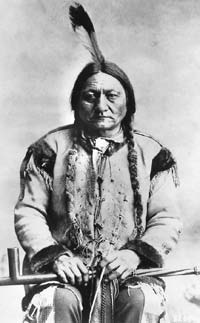

Sitting Bull, Sioux chief who led the last great battle
of the Plains Indians against the U.S. Army, when his
warriors defeated forces under the command of
General George Custer at the Battle of
Little Bighorn in 1876.
Custer’s army on the march prior to
Little Bighorn. The Plains Indians who
defeated his army were resisting white
intrusions into their sacred lands and
U.S. government attempts to force
them back onto South Dakota’s
Great Sioux Reservation.
98
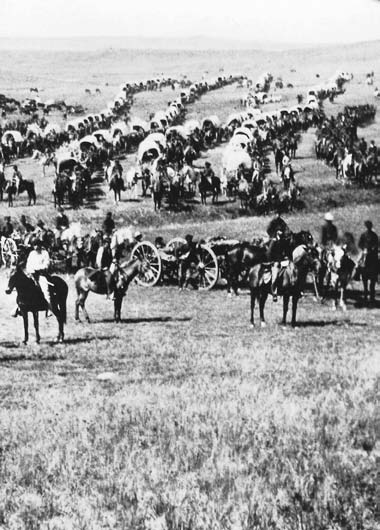
99
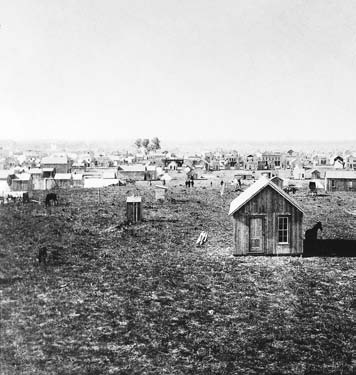
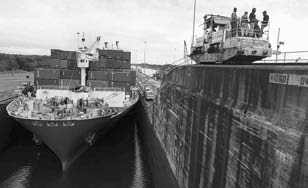

Above, Oklahoma City in 1889, four weeks after the Oklahoma
Territory was opened up for settlement. Settlers staked their claim,
put up tents, and then swiftly began erecting board shacks and
houses — a pattern repeated throughout the West.
Left, a vessel at the Gatun locks of the Panama Canal. The United
States acquired the rights to build the canal in 1903 in a treaty with
Panama, which had just rebelled and broken away from Colombia.
Under the terms of the 1977 treaty, the canal reverted to
Panamanian control on December 31, 1999.
101
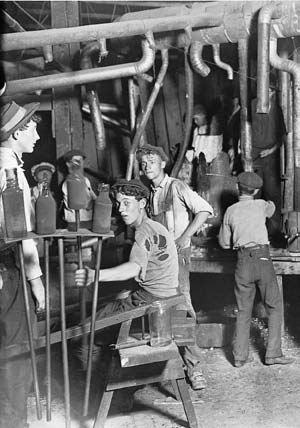
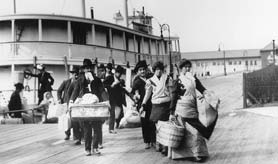
102

Left, opposite page, immigrants arriving at Ellis Island in New York
City, principal gateway to the United States in the late 19th and early
20th centuries. From 1890 to 1921, almost 19 million people entered
the United States as immigrants.
Below, children working at the Indiana Glass Works in 1908.
Enacting child labor laws was one of the principal goals of the
Progressive movement in this era.
103

Mulberry Street in New York City, also known as
“Little Italy,” in the early years of the 20th century.
Newly arrived immigrant families, largely from
Eastern and southern Europe in this period,
often settled in densely populated urban
enclaves. Typically, their children,
or grandchildren, would disperse,
moving to other cities or other
parts of the country.
104
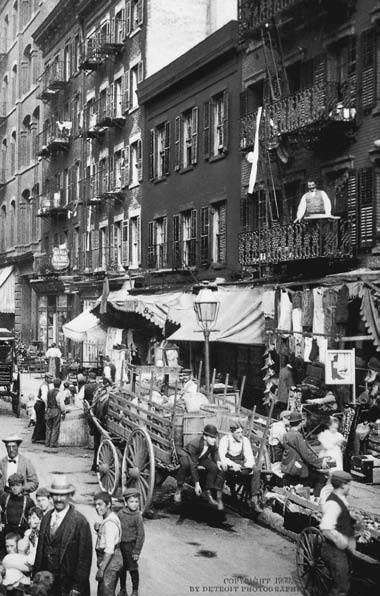
105
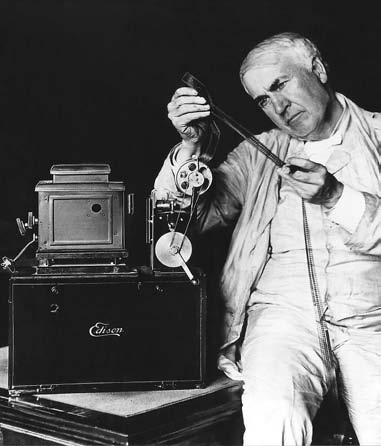
Thomas Edison examines film used in the motion picture
projector that he invented with George Eastman. The most
celebrated of Edison’s hundreds of inventions was the
incandescent light bulb.
106

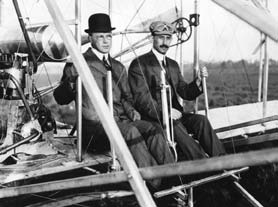
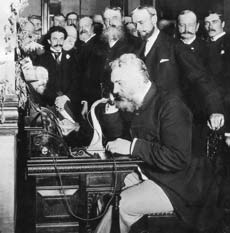
Orville Wright, who built and flew the first heavier-than-air airplane at
Kitty Hawk, North Carolina, in 1903, with his brother Wilbur. Orville is
shown here at the controls of a later model plane in 1909.
Alexander Graham Bell makes the first telephone call from
New York City to Chicago in 1892. Bell, an immigrant from
Scotland who settled in Boston, invented the telephone 16 years
earlier, in 1876.
107
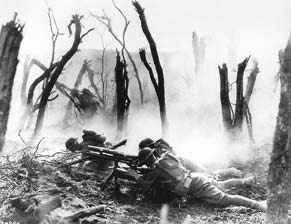

American infantry forces in 1918, firing a 37 mm. gun, advance against German
positions in World War I.
The “Big Four” at the Paris Peace Conference in 1919, following the end of World War I. They are, seated from left, Prime Minister Vittorio Orlando of Italy, Prime Minister David Lloyd George of Great Britain, Premier Georges Clemenceau of France, and President Woodrow Wilson of the United States. Despite strenuous efforts, Wilson was unable to persuade the U.S. Senate to agree to American participation in the new League of Nations established in the aftermath of the war.
108
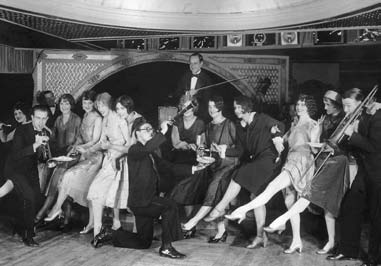
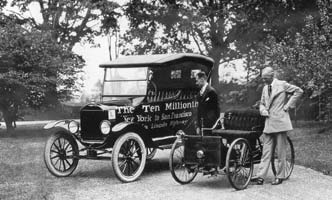
For the educated and well-to-do, the 1920s was the era of the “Lost Generation,”
symbolized by writers like Ernest Hemingway, who left the United States for voluntary exile in Paris. It was also the “flapper era” of frivolity and excess in which young people could reject the constraints and traditions of their elders. Top, flappers posing for the camera at a 1920s-era party. Above, Henry Ford and his son stand with one of his early automobiles, and the 10-millionth Ford Model-T. The Model-T was the first car whose price and availability made car ownership possible for large numbers of people.
109
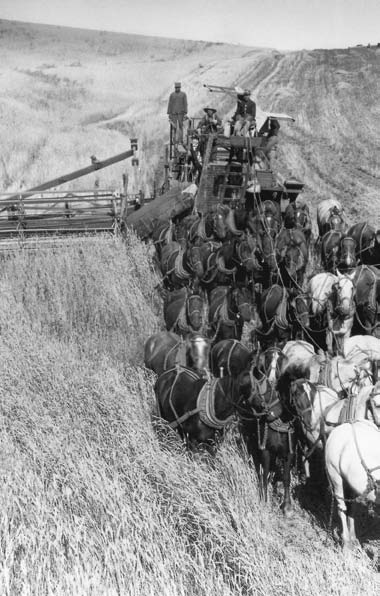
110
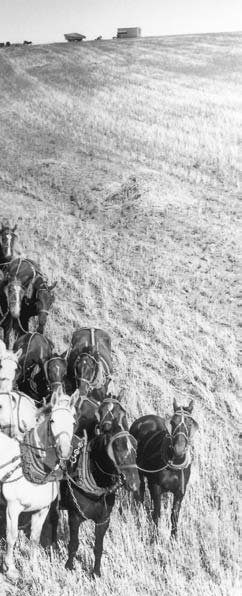
C H A P T E R
5
WESTWARD
EXPANSION
AND
REGIONAL
DIFFERENCES
Horse-drawn combine
harvesting wheat in the
Midwest, 19th century.
CHAPTER 5: WESTWARD EXPANSION AND REGIONAL DIFFERENCES
“Go West, young man,
and grow up with
the country.”
Newspaper editor Horace Greeley, 1851
BUILDING UNITY
was as essential as political inde-
T
pendence . To foster self-sufficiency,
he War of 1812 was, in a sense, congressional leaders Henry Clay of
a second war of independence that Kentucky and John C . Calhoun of
confirmed once and for all the South Carolina urged a policy of pro-
American break with England . With tectionism — imposition of restric-
its conclusion, many of the serious tions on imported goods to foster the
difficulties that the young republic development of American industry .
had faced since the Revolution dis-
The time was propitious for rais-
appeared . National union under ing the customs tariff . The shepherds
the Constitution brought a balance of Vermont and Ohio wanted pro-
between liberty and order . With a tection against an influx of English
low national debt and a continent wool . In Kentucky, a new industry
awaiting exploration, the prospect of weaving local hemp into cotton
of peace, prosperity, and social prog- bagging was threatened by the Scot-
ress opened before the nation .
tish bagging industry . Pittsburgh,
Commerce cemented national Pennsylvania, already a flourishing
unity . The privations of war con- center of iron smelting, was eager to
vinced many of the importance of challenge British and Swedish iron
protecting the manufacturers of suppliers . The tariff enacted in 1816
America until they could stand alone imposed duties high enough to give
against foreign competition . Eco- manufacturers real protection .
nomic independence, many argued,
In addition, Westerners advocat-
112
OUTLINE OF U.S. HISTORY
ed a national system of roads and Maryland (1819), he boldly upheld
canals to link them with Eastern cit- the Hamiltonian theory that the
ies and ports, and to open frontier Constitution by implication gives
lands for settlement . However, they the government powers beyond
were unsuccessful in pressing their those expressly stated .
demands for a federal role in inter-
nal improvement because of oppo-
EXTENSION OF SLAVERY
sition from New England and the
South . Roads and canals remained Slavery, which up to now had re-
the province of the states until the ceived little public attention, began
passage of the Federal Aid Road Act to assume much greater importance
of 1916 .
as a national issue . In the early years
The position of the federal gov- of the republic, when the Northern
ernment at this time was greatly states were providing for immedi-
strengthened by several Supreme ate or gradual emancipation of the
Court decisions . A committed Fed- slaves, many leaders had supposed
eralist, John Marshall of Virginia be- that slavery would die out . In 1786
came chief justice in 1801 and held George Washington wrote that he
office until his death in 1835 . The devoutly wished some plan might
court — weak before his adminis- be adopted “by which slavery may
tration — was transformed into a be abolished by slow, sure, and im-
powerful tribunal, occupying a po- perceptible degrees .” Virginians Jef-
sition co-equal to the Congress and ferson, Madison, and Monroe and
the president . In a succession of his- other leading Southern statesmen
toric decisions, Marshall established made similar statements .
the power of the Supreme Court and
The Northwest Ordinance of 1787
strengthened the national govern- had banned slavery in the Northwest
ment .
Territory . As late as 1808, when the
Marshall was the first in a long international slave trade was abol-
line of Supreme Court justices whose ished, there were many Southern-
decisions have molded the meaning ers who thought that slavery would
and application of the Constitu- soon end . The expectation proved
tion . When he finished his long ser- false, for during the next generation,
vice, the court had decided nearly the South became solidly united
50 cases clearly involving constitu- behind the institution of slavery as
tional issues . In one of Marshall’s new economic factors made slavery
most famous opinions — Marbury far more profitable than it had been
v. Madison (1803) — he decisively before 1790 .
established the right of the Supreme
Chief among these was the rise of
Court to review the constitution- a great cotton-growing industry in
ality of any law of Congress or of the South, stimulated by the intro-
a state legislature . In McCulloch v. duction of new types of cotton and 113
CHAPTER 5: WESTWARD EXPANSION AND REGIONAL DIFFERENCES
by Eli Whitney’s invention in 1793 of
In 1819 Missouri, which had
the cotton gin, which separated the 10,000 slaves, applied to enter the
seeds from cotton . At the same time, Union . Northerners rallied to op-
the Industrial Revolution, which pose Missouri’s entry except as a free
made textile manufacturing a large- state, and a storm of protest swept
scale operation, vastly increased the the country . For a time Congress
demand for raw cotton . And the was deadlocked, but Henry Clay ar-
opening of new lands in the West ranged the so-called Missouri Com-
after 1812 greatly extended the area promise: Missouri was admitted as
available for cotton cultivation . Cot- a slave state at the same time Maine
ton culture moved rapidly from the came in as a free state . In addition,
Tidewater states on the East Coast Congress banned slavery from the
through much of the lower South to territory acquired by the Louisiana
the delta region of the Mississippi Purchase north of Missouri’s south-
and eventually to Texas .
ern boundary . At the time, this pro-
Sugar cane, another labor-inten- vision appeared to be a victory for
sive crop, also contributed to slav- the Southern states because it was
ery’s extension in the South . The thought unlikely that this “Great
rich, hot lands of southeastern Loui- American Desert” would ever be
siana proved ideal for growing sug- settled . The controversy was tempo-
ar cane profitably . By 1830 the state rarily resolved, but Thomas Jefferson
was supplying the nation with about wrote to a friend that “this momen-
half its sugar supply . Finally, tobac- tous question, like a fire bell in the co growers moved westward, taking night, awakened and filled me with
slavery with them .
terror . I considered it at once as the
As the free society of the North knell of the Union .”
and the slave society of the South
spread westward, it seemed politi-
LATIN AMERICA AND THE
cally expedient to maintain a rough
MONROE DOCTRINE
equality among the new states
carved out of western territories . In During the opening decades of
1818, when Illinois was admitted to the 19th century, Central and South
the Union, 10 states permitted slav- America turned to revolution . The
ery and 11 states prohibited it; but idea of liberty had stirred the people
balance was restored after Alabama of Latin America from the time the
was admitted as a slave state . Popula- English colonies gained their free-
tion was growing faster in the North, dom . Napoleon’s conquest of Spain
which permitted Northern states to and Portugal in 1808 provided the
have a clear majority in the House signal for Latin Americans to rise in
of Representatives . However, equal- revolt . By 1822, ably led by Simón








































